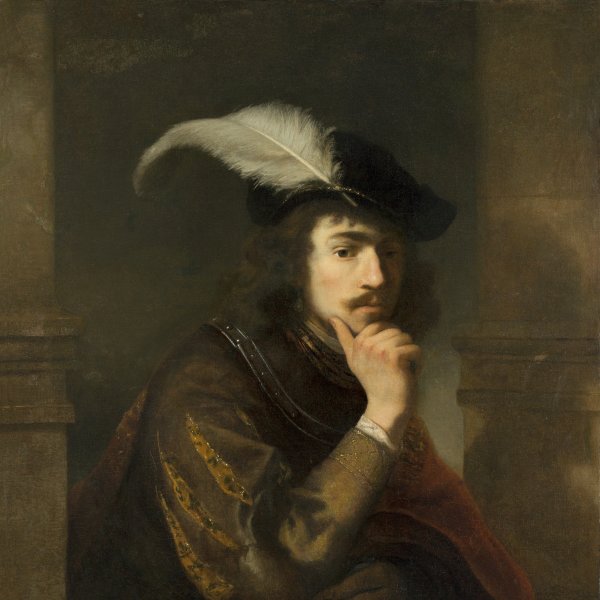Ferdinand Bol
Dordrecht, 1616-Amsterdam, 1680
Bol first trained as a painter with Jacob Gerritsz. Cuyp in his native city of Dordrecht. Like Cuyp, he may have worked for a short period in Utrecht as his first known work, Vertumnus (Cevat collection, London) of around 1635 reveals the influence of the Utrecht style. In 1637, at the age of 20, he moved to Amsterdam to study in Rembrandt’s studio, becoming one of his most outstanding pupils. It is not known how long he remained there and no works are known from this period until 1642, when he probably became an independent master. Bol’s style depended to such an extent on Rembrandt’s that some of his works have been erroneously attributed to his master in the past. In 1649 he received his first important commission to paint The Regents of the Leper Hospital in Amsterdam (Historisch Museum, Amsterdam).
In the 1650s Bol’s career prospered and his style began to move away from that of Rembrandt, becoming softer, more elegant and influenced by Flemish painting. In 1652 he became a citizen of Amsterdam, having already lived in that city for many years. He may have been motivated to apply for citizenship in order to present himself as a candidate for the decoration of the city’s new Town Hall, which was only open to residents of Amsterdam. In 1653 he married Lysbeth Dell from a prominent Amsterdam family. In 1656 and together with Govert Flink he was awarded the commission to decorate the Burgomaster’s Hall in the new Town Hall, executing a large history painting on Fabritius and Pyrrhus (in situ). Among his most important projects was a series of portraits of Admiral Michiel de Ruyter, painted between 1661 and 1663. In 1669 the artist married Anna van Arckel, the wealthy widow of the Admiralty treasurer. He seems to have abandoned painting following his marriage as no work is known from after that date. Like Rembrandt, Bol focused on portraits and history painting throughout his career.
In the 1650s Bol’s career prospered and his style began to move away from that of Rembrandt, becoming softer, more elegant and influenced by Flemish painting. In 1652 he became a citizen of Amsterdam, having already lived in that city for many years. He may have been motivated to apply for citizenship in order to present himself as a candidate for the decoration of the city’s new Town Hall, which was only open to residents of Amsterdam. In 1653 he married Lysbeth Dell from a prominent Amsterdam family. In 1656 and together with Govert Flink he was awarded the commission to decorate the Burgomaster’s Hall in the new Town Hall, executing a large history painting on Fabritius and Pyrrhus (in situ). Among his most important projects was a series of portraits of Admiral Michiel de Ruyter, painted between 1661 and 1663. In 1669 the artist married Anna van Arckel, the wealthy widow of the Admiralty treasurer. He seems to have abandoned painting following his marriage as no work is known from after that date. Like Rembrandt, Bol focused on portraits and history painting throughout his career.





